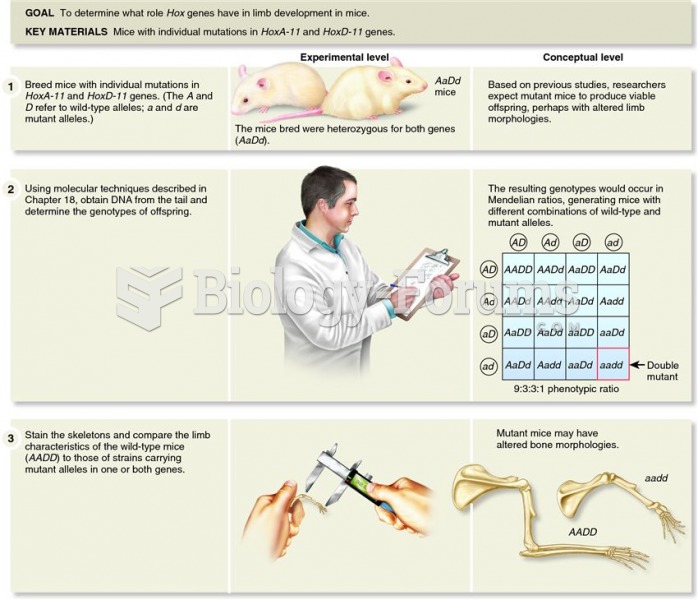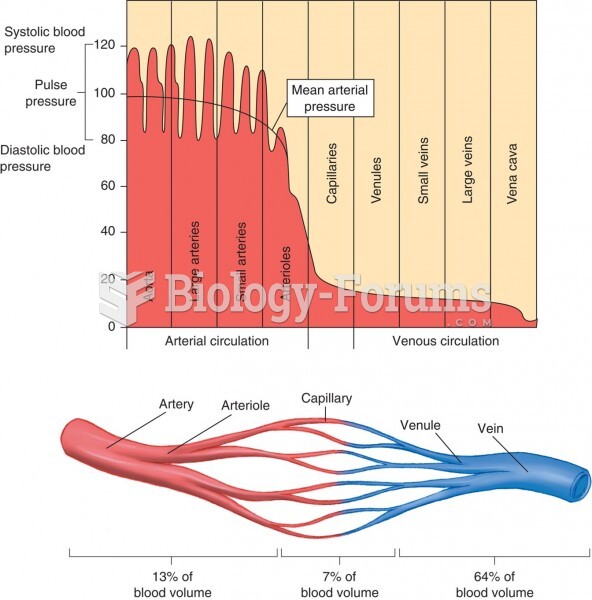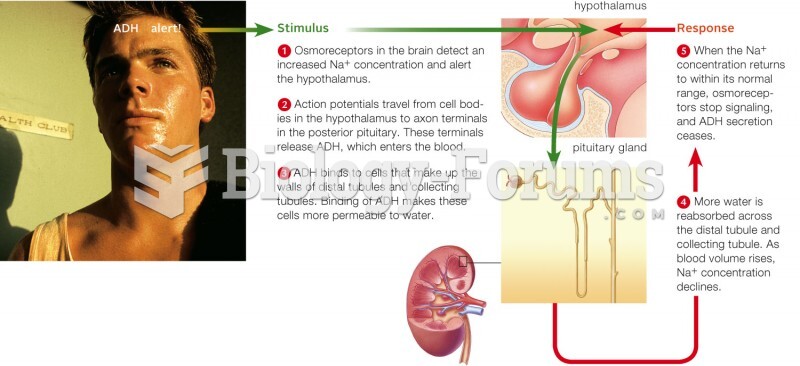|
|
|
Did you know?
There are 20 feet of blood vessels in each square inch of human skin.
Did you know?
Disorders that may affect pharmacodynamics include genetic mutations, malnutrition, thyrotoxicosis, myasthenia gravis, Parkinson's disease, and certain forms of insulin-resistant diabetes mellitus.
Did you know?
The horizontal fraction bar was introduced by the Arabs.
Did you know?
Anti-aging claims should not ever be believed. There is no supplement, medication, or any other substance that has been proven to slow or stop the aging process.
Did you know?
Illicit drug use costs the United States approximately $181 billion every year.







